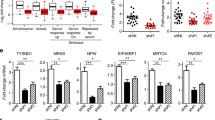Abstract
CK2 is upregulated in rapidly dividing cells including most human tumours. Transgenic overexpression of CK2 in lymphoid or mammary lineages predisposes to transformation. Multiple signalling and oncogene pathways could be regulated by CK2 in this process. Our studies suggest that phosphorylation of critical oncogenes by CK2, as well as by other serine-threonine kinases, regulates their stability via susceptibility to the proteasomal degradation system. β-catenin is a transcriptional co-factor in the Wnt signalling pathway that is regulated in this fashion. Inactivating mutations in the adenomatosis polyposis coli (APC) gene, which encodes a carrier protein for β-catenin, or stabilizing mutations in β-catenin itself, frequently occur in human tumours. CK2 and the monomeric serine-threonine kinase GSK3 have opposing actions on β-catenin: GSK-3 phosphorylation of the N-terminus of β-catenin promotes degradation; while phosphorylation by CK2 in the armadillo repeat protein interaction domain protects it. β-catenin is overexpressed in mammary tumours occurring in mice transgenic for CK2 or a dominant negative form of GSK3, and also in mammary tumours arising following treatment with the environmental carcinogen DMBA. Experiments are underway to determine whether expression of both CK2 and kinase inactive GSK3 further accelerates tumorigenesis. Inhibitors of GSK3 under development for treatment of diabetes could promote tumours, while CK2 inhibitors should be useful agents for treatment of cancer.
Similar content being viewed by others
References
Siegfried E, Chou TB, Perrimon N: Wingless signaling acts through zeste-white 3, the Drosophila homolog of glycogen synthase kinase-3, to regulate engrailed and establish cell fate. Cell 71: 1167–1179, 1992
Nusse R, van Ooyen A, Cox D, Fung YK, Varmus H: Mode of proviral activation of a putative mammary oncogene (int-1) on mouse chromosome 15. Nature 307: 131–136, 1984
He X, Saint-Jeannet JP, Woodgett JR, Varmus HE, Dawid IB: Glycogen synthase kinase-3 and dorsoventral patterning in Xenopus embryos. Nature 374: 617–622, 1995
Dominguez I, Itoh K, Sokol SY: Role of glycogen synthase kinase 3 beta as a negative regulator of dorsoventral axis formation in Xenopus embryos. Proc Natl Acad Sci USA 92: 8498–8502, 1995
Morin PJ, Sparks AB, Korinek V, Barker N, Clevers H, Vogelstein B, Kinzler KW: Activation of beta-catenin-Tcf signaling in colon cancer by mutations in beta-catenin or APC. Science 275: 1787–1790, 1997
Willert K, Brink M, Wodarz A, Varmus H, Nusse R: Casein kinase 2 associates with and phosphorylates dishevelled. EMBO J 16: 3089–3096, 1997
Song DH, Sussman DJ, Seldin DC: Endogenous protein kinase CK2 participates in Wnt signaling in mammary epithelial cells. J Biol Chem 275: 23790–23797, 2000
Song DH, Dominguez I, Mizuno J, Kaut M, Mohr SC, Seldin DC: CK2 phosphorylation of the armadillo repeat region of beta-catenin potentiates Wnt signaling. J Biol Chem 278: 24018–24025, 2003
Tuschl T, Borkhardt A: Small interfering RNAs: a revolutionary tool for the analysis of gene function and gene therapy. Mol Int 2: 158–167, 2002
Yuan B, Latek R, Hossbach M, Tuschl T, Lewitter F: siRNA Selection Server: an automated siRNA oligonucleotide prediction server. Nucl Acids Res 32: W130–W134, 2004
Rosner A, Miyoshi K, Landesman-Bollag E, Xu X, Seldin DC, Moser AR, MacLeod CL, Shyamala G, Gillgrass AE, Cardiff RD: Pathway pathology: histological differences between ErbB/Ras and Wnt pathway transgenic mammary tumors. Am J Pathol 161: 1087–1097, 2002
Xu X, Toselli PA, Russell LD, Seldin DC: Globozoospermia in mice lacking the casein kinase II alpha’ catalytic subunit. Nat Genet 23: 118–121, 1999
Buchou T, Vernet M, Blond O, Jensen HH, Pointu H, Olsen BB, Cochet C, Issinger OG, Boldyreff B: Disruption of the regulatory beta subunit of protein kinase CK2 in mice leads to a cell-autonomous defect and early embryonic lethality. Mol Cell Biol 23: 908–915, 2003
Channavajhala P, Seldin DC: Functional interaction of protein kinase CK2 and c-Myc in lymphomagenesis. Oncogene 21: 5280–5288, 2002
Romieu-Mourez R, Landesman-Bollag E, Seldin DC, Sonenshein GE: Protein kinase CK2 promotes aberrant activation of nuclear factor-kappaB, transformed phenotype, and survival of breast cancer cells. Cancer Res 62: 6770–6778, 2002
Landesman-Bollag E, Romieu-Mourez R, Song DH, Sonenshein GE, Cardiff RD, Seldin DC: Protein kinase CK2 in mammary gland tumorigenesis. Oncogene 20: 3247–3257, 2001
Author information
Authors and Affiliations
Corresponding author
Rights and permissions
About this article
Cite this article
Seldin, D.C., Landesman-Bollag, E., Farago, M. et al. CK2 as a positive regulator of Wnt signalling and tumourigenesis. Mol Cell Biochem 274, 63–67 (2005). https://doi.org/10.1007/s11010-005-3078-0
Issue Date:
DOI: https://doi.org/10.1007/s11010-005-3078-0




